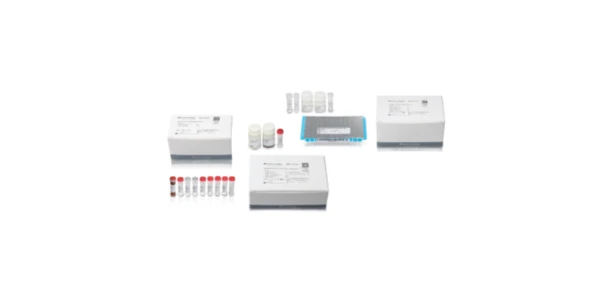We’ve discussed various elements of mass spectrometry and evaporation systems in previous posts. A common thread that links these diverse technologies together is the dependence on a vacuum source for operation. In fact, vacuum pumps are essential components of many lab operations and consideration of their capabilities and limitations should be made prior to purchasing. In this post, we will explore several common types of pumps and technical details, saving upgrade considerations and tips for a subsequent post.
The vacuum pump is based upon the principle of removing gas molecules from a sealed cavity in order to create a partial vacuum. The technology has advanced from rudimentary and elemental origins (yes Galileo was involved) to an advanced set of device formats. Considering the three main types, the Positive Displacement Pump, the Momentum Transfer Pump, and the Regenerative Pump, we will focus on examples of the first two, the Rotary Vane Pump and the Turbomolecular Pump, respectively.
Positive Displacement Pumps function by repeatedly expanding a cavity thereby allowing gases flow in, sealing off the cavity, and then exhausting the gases from the cavity to the external environment. These types of pumps are generally effective for low vacuum operations: 1-50 kPa for basic rubber or plastic sealed piston pumps, ≤ 10 Pa for scroll pumps, and ≤ 0.1 Pa for rotary vane oil pumps. More sophisticated systems exist for industrial operations, but the basic concept of cyclical volume removal is the standard. Device types include the: Rotary vane, diaphragm, liquid ring, piston pump, scroll pumps, and others.
The Rotary Vane Pump is the most common type used in research and development lab environments. These pumps are based around the mechanism of rotating vanes within a circular housing that direct gas flow in one direction, in order to actively remove the gases from the cavity thereby creating the vacuum. Typical setups involve one or two stage function to deliver low and higher vacuums accordingly, based on the duty requirements – the latter reaching pressures well below 10-6 bar. The relative straight forward mechanism of the rotary pump equates to high pumping speeds -- on the order of approximately 25 L/s. These are typically oil-sealed pumps, meaning oil is used as a mechanical lubricant which can carry over to the gas outlet. Therefore, there is not only a need for oil maintenance and periodic changes, but also a mist filter and other safeguards on nearby lab equipment. Advantages include: a bypass valve at the inlet allowing for rapid evacuation, a compact and simple design, air cooling, and low power consumption.
Oil-sealed rotary pumps are used in equipment such as centrifugal evaporators (speedvacs and lyophilyzers), vacuum manifolds for cell culture and solution removal, and as rough pumps in-line with high vacuum systems in mass spectrometers and other analytical equipment. In this regard, rotary pumps can be used in combination with a number of different pumps, such as a diffusion pumps, for the purpose of enhancing performance. There has been a push to switch from these oil-sealed pumps to oil-free, in order to eliminate potential sources of sample contamination in high-end analytical equipment. Dry scroll pumps have been gaining usage due to the above considerations coupled with low cost of ownership and longer maintenance intervals.
Momentum Transfer Pumps operate by acceleration of gas molecules from the vacuum side to the exhaust side, which is typically maintained at a reduced pressure by a positive displacement pump such as a rotary vane pump -- otherwise known as a rough pump. Momentum transfer pumps only function at pressures below 0.1 kPa due to the effects on fluid dynamics, the basic principle underlying the operation of these pumps. The vacuum gradient between the cavity and the exhaust allows efficient ‘fluid’ flow of gas molecules through the pump and can therefore run at very high speeds, achieving high vacuum on the order 10-10 bar or 100 µPa.
The Turbomolecular Pump uses high speed fans the drive accelerated gas through the pump thereby creating high vacuum. As they function at much higher speeds and volumes as mechanical vacuums, they do not possess a seal at the exhaust port, therefore, small pressures and backstreaming can cause pump stall. As a result, there is an upper limit beyond which the pumps cannot function.
Turbo pumps in-line with rough pumps or backing pumps are used in mass spectrometers in order to create the high vacuum necessary for efficient capture and analysis of gaseous molecules following the ionization stage of the analysis. As detailed in a previous post, ions are created in the ion source by simultaneous evaporation of liquid and generation of charged molecules. These gaseous ions may potentially collide with other gasses including the carrier gas (He) or residual gas (air, water, etc) on the way to the detector and therefore be unfortunately lost. This collision can occur within a short time under atmospheric conditions. The average distance of the free flight of an ion without collision is called the “mean free path”. High vacuum provides a long mean free path, exceeding the length of the analysis chamber, therefore allowing the ions to easily and efficiently reach the detector.
Vacuum pumps are used in many industrial applications including manufacturing of plastics and vacuum tubes such as cathode ray tubes, semiconductor processing, and others. In research and medicine, they are used in electron microscopy, radiosurgery, and additional settings. While in broader fields, they are important in glass and metal hardening processing, freeze drying, and a number of surprisingly diverse applications. We have only touched on a few basic concepts and applications of vacuum pumps for the purposes of our discussions. Take a look at the next post for tips and considerations when making an informed purchase.











